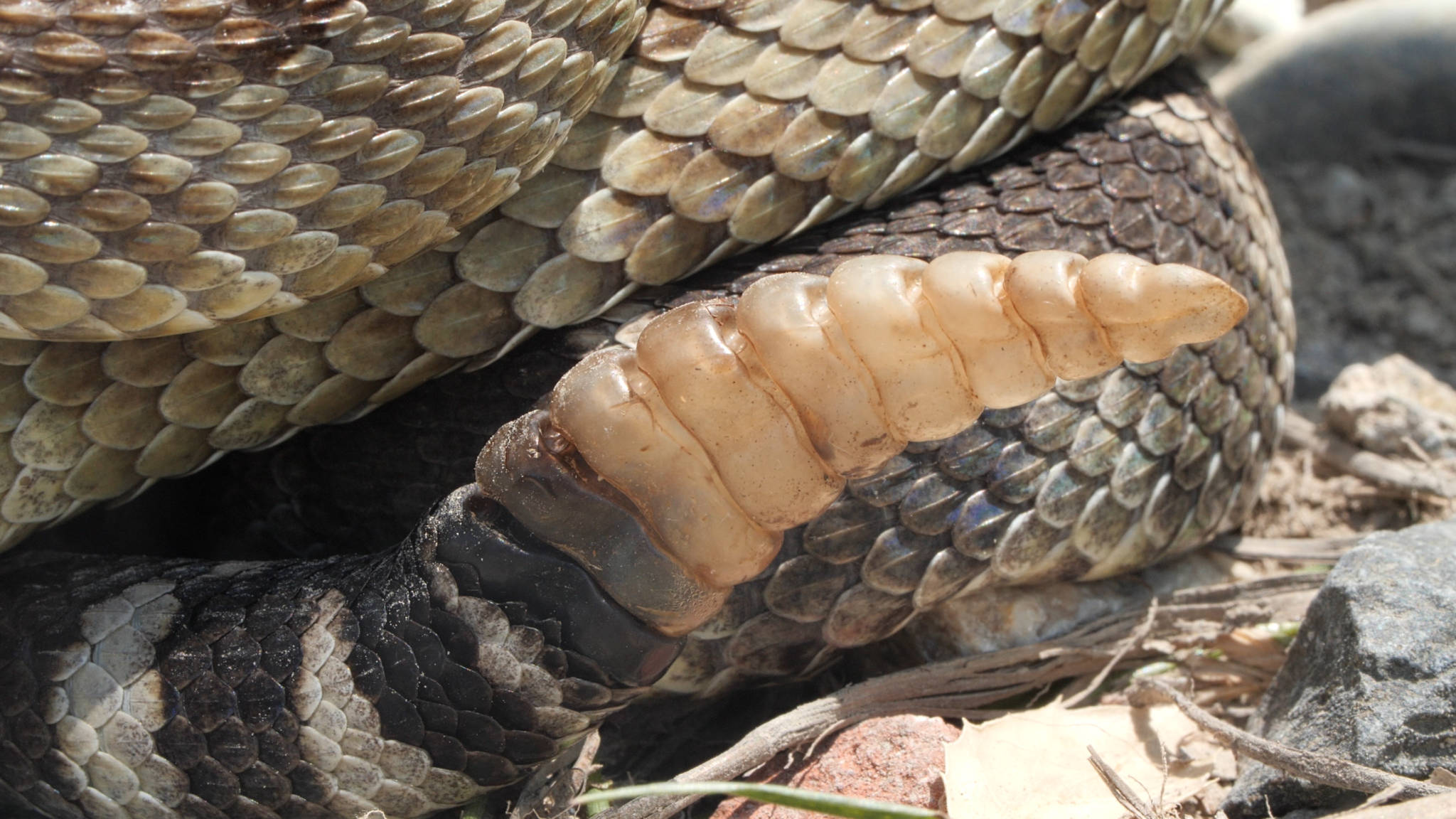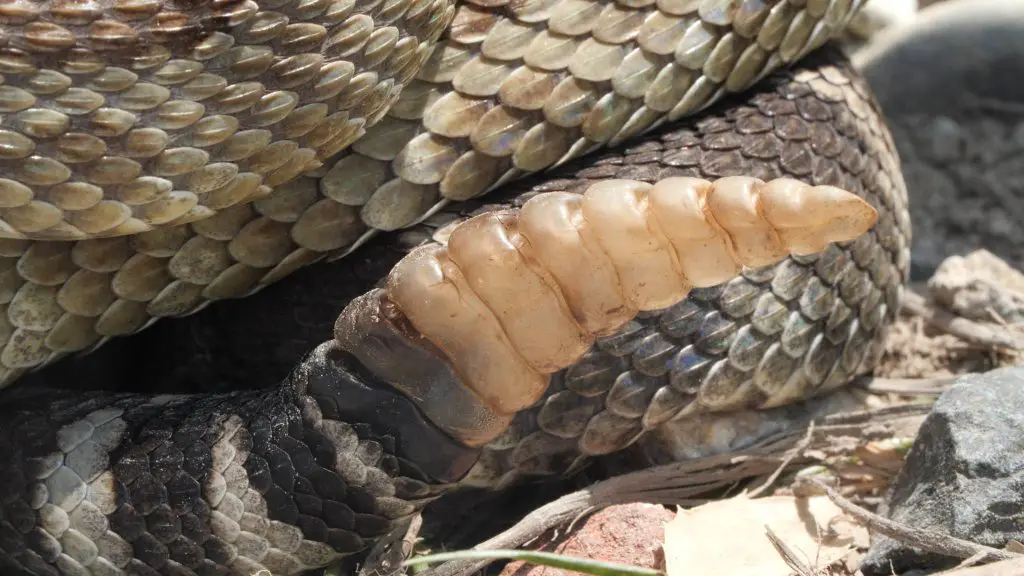Rattlesnakes are one of the most feared creatures in North America. Their venomous bites can be fatal, and their signature rattles are a warning to keep your distance. But what about those rattles? Are they poisonous too?
Many people believe that the rattles of a rattlesnake are just as dangerous as their venomous bites. However, the truth is a bit more complicated. In this article, we’ll explore whether rattlesnake rattles are poisonous, how they work, and what to do if you come across one in the wild. So, let’s get started!
Rattlesnake rattles are not poisonous. They are made of keratin, the same material as our hair and nails. However, if a rattlesnake bites you and injects venom, seek medical attention immediately.

Are Rattlesnake Rattles Poisonous?
Rattlesnakes are one of the most recognizable and feared snakes in the world. With their distinctive rattles, they are easily identified and often seen as a symbol of danger. But are rattlesnake rattles poisonous? In this article, we will take a closer look at this question and uncover the truth about rattlesnake rattles.
What is a Rattlesnake Rattle?
A rattlesnake rattle is a collection of interlocking segments at the end of the snake’s tail. Each segment is made of keratin, the same material that makes up our hair and nails. When the snake moves its tail, the segments rattle together, creating the distinctive noise that characterizes rattlesnakes.
The Toxicity of Rattlesnake Venom
Rattlesnakes are venomous snakes, meaning that they produce and inject venom into their prey or attackers. The venom is a complex mixture of proteins and other compounds that can cause a range of effects on the body. Depending on the species of rattlesnake, the venom can cause tissue damage, pain, swelling, and even death.
Are Rattlesnake Rattles Poisonous?
While rattlesnake venom is certainly poisonous, the rattles themselves are not. The segments that make up the rattle are made of keratin, which is not toxic to humans or other animals. In fact, many people collect rattlesnake rattles as a souvenir or decorative item.
What are the Benefits of Rattlesnake Rattles?
While rattlesnake rattles are not poisonous, they do serve an important function for the snake. The rattles help to warn predators and other animals of the snake’s presence, giving them a chance to avoid a potentially dangerous encounter. For humans, rattlesnake rattles can also have cultural and historical significance, as they have been used for centuries by Native American tribes in ceremonies and rituals.
Uses of Rattlesnake Rattles
Rattlesnake rattles have been used in many ways throughout history. They have been used as musical instruments, as well as in traditional medicine and spiritual practices. In some cultures, they are believed to have protective properties and are worn as talismans or amulets.
Rattlesnake Rattles vs. Other Snake Rattles
While rattlesnake rattles are perhaps the most well-known type of snake rattle, other species of snakes also have similar structures at the end of their tails. However, these rattles do not make the distinctive noise that rattlesnake rattles do, and they are not as tightly interlocked.
Conclusion
In conclusion, rattlesnake rattles are not poisonous. While rattlesnakes themselves are venomous and can be dangerous to humans and other animals, the rattles themselves are harmless. Rattlesnake rattles serve an important function for the snake, helping to warn potential predators of their presence. For humans, rattlesnake rattles can have cultural and historical significance, as well as being used in various forms of art and decoration.
Frequently Asked Questions
What are Rattlesnake Rattles?
Rattlesnake rattles are the iconic segmented appendages located at the end of a rattlesnake’s tail. They are composed of keratin, the same material that makes up human hair and nails. Rattlesnake rattles are used as a warning signal to potential predators and humans, and are made by the snake’s tail moving rapidly to create a buzzing or rattling sound.
How do Rattlesnake Rattles Work?
Rattlesnake rattles work by creating a buzz or rattle sound that warns potential threats to stay away. The rattles are made up of several segments that knock against each other when the snake vibrates its tail. The sound made by the rattles can be heard from a distance, alerting potential threats that the snake is nearby.
Can Rattlesnake Rattles be Dangerous?
Yes, rattlesnake rattles can be dangerous if they are attached to a live rattlesnake. Rattlesnakes are venomous and can inflict a serious bite if provoked. If you hear a rattling sound, it is best to slowly and calmly back away from the area and avoid any potential encounters with rattlesnakes.
Are Rattlesnake Rattles Poisonous?
No, rattlesnake rattles are not poisonous. They are composed of keratin, which is not toxic to humans or animals. However, it is important to note that rattlesnakes themselves are venomous and can cause serious harm if provoked.
Can Rattlesnake Rattles be Used for Medicine or Jewelry?
In some traditional cultures, rattlesnake rattles have been used for medicinal purposes, such as a treatment for rheumatism. However, it is important to note that using rattlesnake products for any purpose is illegal in some areas and can harm the rattlesnake population. It is also important to practice ethical and sustainable sourcing if using rattlesnake rattles for jewelry or other decorative purposes.
How do Rattlesnake Rattles Make Sound?
In conclusion, rattlesnake rattles are not poisonous. However, they still pose a significant threat to humans and animals alike. The venom that rattlesnakes inject into their prey can be fatal, and their aggressive nature when feeling threatened can result in dangerous encounters. It is crucial to take caution when in areas where rattlesnakes are known to inhabit, and to seek immediate medical attention if bitten.
Despite their potentially deadly nature, rattlesnakes play an essential role in their ecosystem as apex predators. Their presence helps to regulate the population of their prey, such as rodents and small mammals, and is crucial for maintaining a healthy balance in the ecosystem.
In summary, while rattlesnake rattles may not be poisonous, it is essential to respect these creatures and take necessary precautions when in their territory. By understanding their role in the ecosystem and taking steps to coexist with them safely, we can ensure that both humans and rattlesnakes can exist peacefully together.


